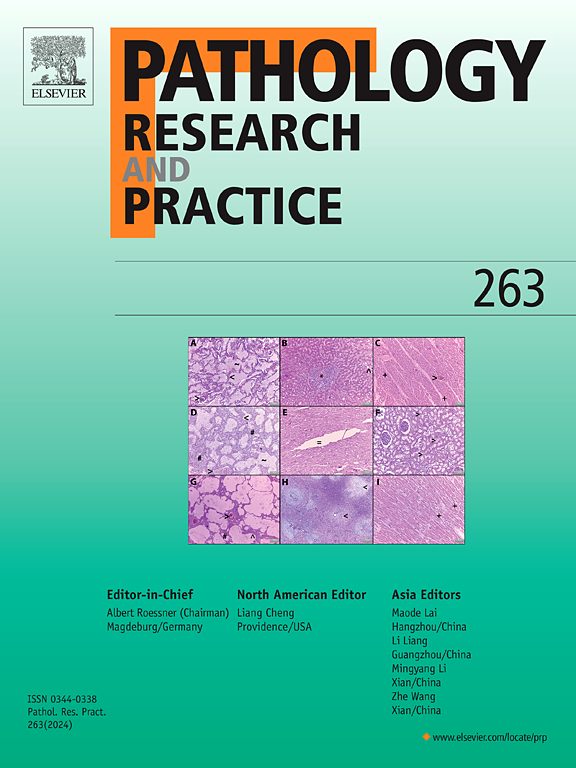Herbal management of TAA-induced liver toxicity: Fibrosis, cirrhosis, and hepatocellular carcinoma
IF 3.2
4区 医学
Q2 PATHOLOGY
引用次数: 0
Abstract
The liver is responsible for the metabolism of the majority of currently utilized medicines and other foreign substances. Thioacetamide (TAA) is a potent hepatotoxin organosulfur compound. Moreover, TAA gained attention in research as a tool to induce liver injuries like inflammation, fibrosis, and cirrhosis, and to study liver regeneration. Several regimens are used to prevent and treat liver disease, but they have been linked with a variety of negative effects. Several natural substances have the potential to assist in the treatment and prevention of liver disease. Multiple mechanisms contribute to the efficacy of these herbal mixtures and their bioactive compounds in preventing and treating liver disease. TAA elicited the generation of ROS, provoked oxidative stress, and initiated apoptosis in hepatic cells via the JNK and MAPK pathways. Nevertheless, the adverse effects of TAA could be suppressed by natural plants, which not only eliminated ROS but also activated the PI3K-Akt cell survival pathway in the liver and prevented apoptosis approaches. Fuller understanding of the disease etiology and fibrotic processes is important for better prevention and treatment. This review aims to describe natural plant use in preventing and treating TAA-induced liver toxicity.
taa诱导的肝毒性的草药治疗:纤维化、肝硬化和肝细胞癌
肝脏负责大多数目前使用的药物和其他外来物质的代谢。硫乙酰胺(TAA)是一种有效的肝毒素有机硫化合物。此外,TAA作为诱导炎症、纤维化、肝硬化等肝脏损伤和研究肝脏再生的工具,在研究中受到关注。预防和治疗肝脏疾病有几种方法,但它们与各种负面影响有关。几种天然物质具有帮助治疗和预防肝脏疾病的潜力。多种机制有助于这些草药混合物及其生物活性化合物在预防和治疗肝脏疾病方面的功效。TAA通过JNK和MAPK途径诱导肝细胞产生ROS,引发氧化应激,并启动肝细胞凋亡。然而,TAA的副作用可以被天然植物抑制,它不仅可以消除ROS,还可以激活肝脏中PI3K-Akt细胞存活通路,阻止凋亡途径。更充分地了解疾病的病因和纤维化过程对更好地预防和治疗是重要的。本文综述了天然植物在预防和治疗taa肝毒性方面的应用。
本文章由计算机程序翻译,如有差异,请以英文原文为准。
求助全文
约1分钟内获得全文
求助全文
来源期刊
CiteScore
5.00
自引率
3.60%
发文量
405
审稿时长
24 days
期刊介绍:
Pathology, Research and Practice provides accessible coverage of the most recent developments across the entire field of pathology: Reviews focus on recent progress in pathology, while Comments look at interesting current problems and at hypotheses for future developments in pathology. Original Papers present novel findings on all aspects of general, anatomic and molecular pathology. Rapid Communications inform readers on preliminary findings that may be relevant for further studies and need to be communicated quickly. Teaching Cases look at new aspects or special diagnostic problems of diseases and at case reports relevant for the pathologist''s practice.

 求助内容:
求助内容: 应助结果提醒方式:
应助结果提醒方式:


